The Jim and Vanita Oelschlager
Native American Ethnographic Collection
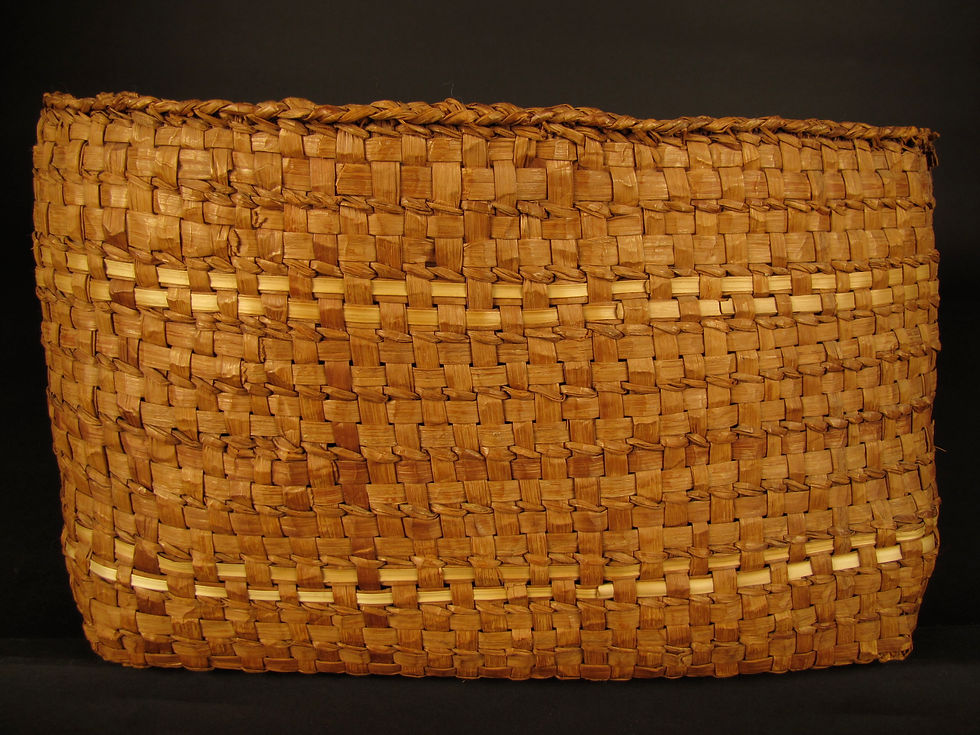
Envelope Bag, ca. 1920 Tsmishian. Alaska Territory. Cedar. 7” x 12” x 5”
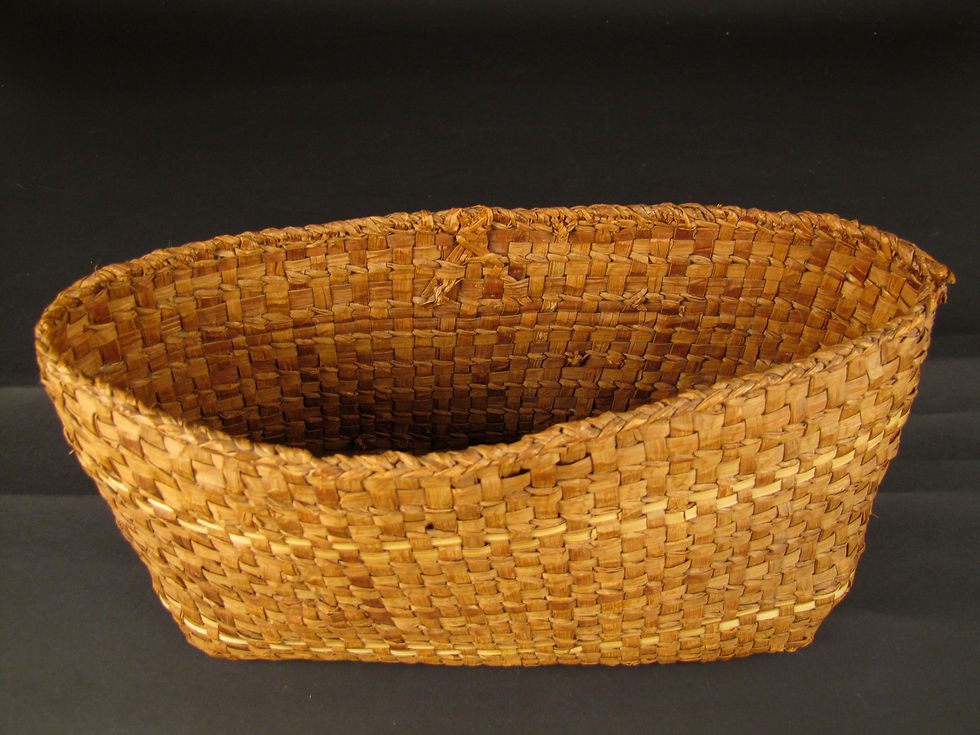
Envelope Bag, ca. 1920 Tsmishian. Alaska Territory. Cedar. 7” x 12” x 5”

Envelope Bag, ca. 1920 Tsmishian. Alaska Territory. Cedar. 7” x 12” x 5”
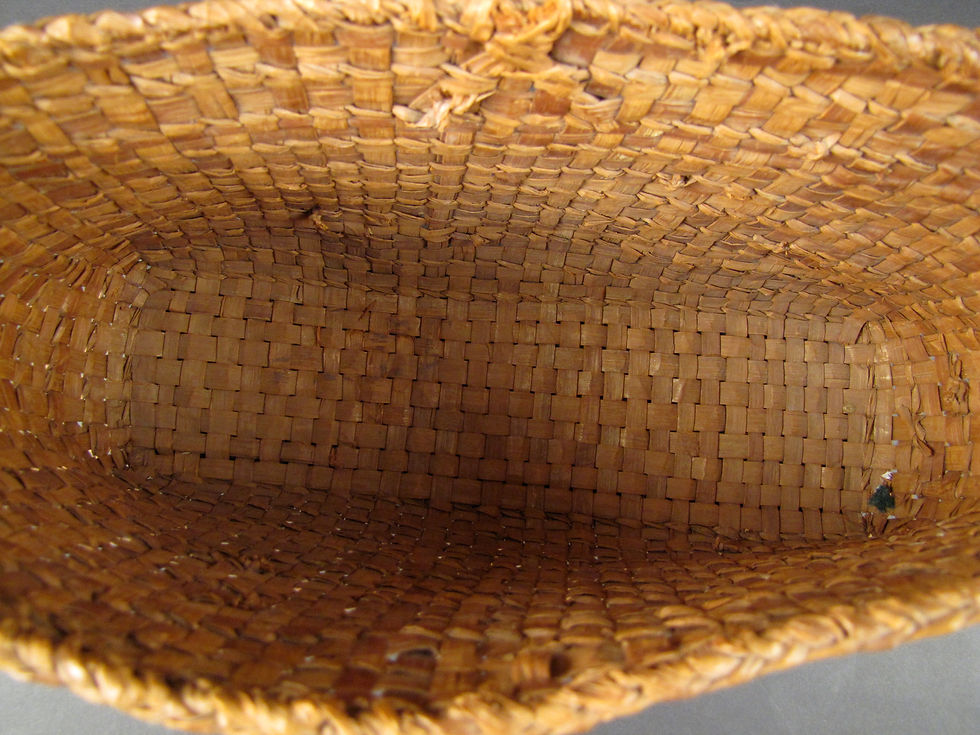
Envelope Bag, ca. 1920 Tsmishian. Alaska Territory. Cedar. 7” x 12” x 5”
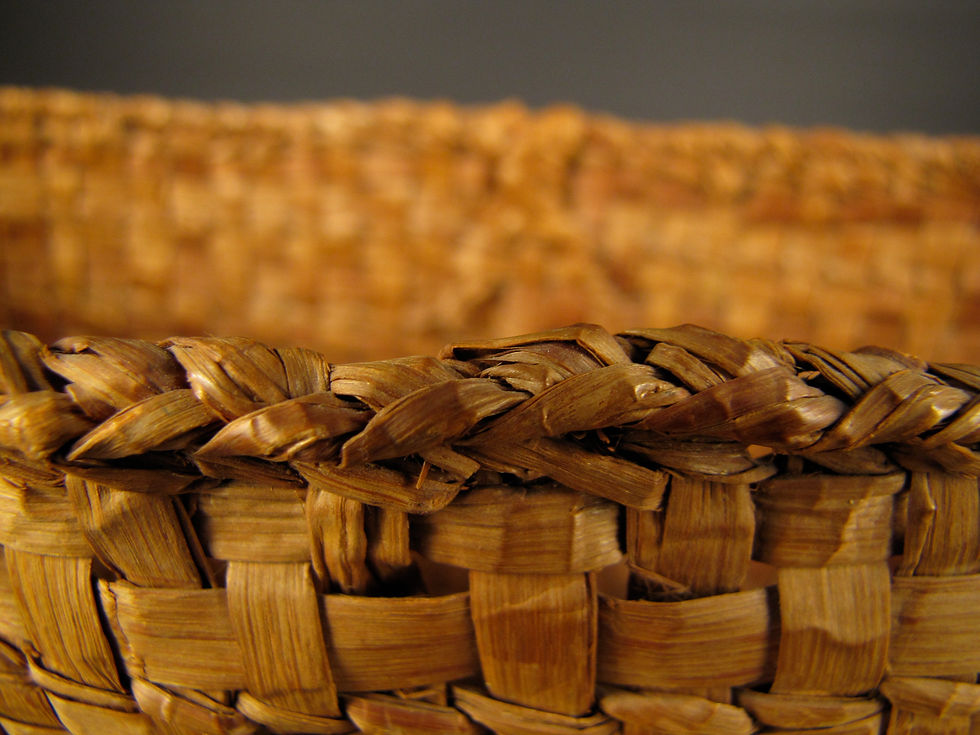
Envelope Bag, ca. 1920 Tsmishian. Alaska Territory. Cedar. 7” x 12” x 5”

Envelope Bag, ca. 1920 Tsmishian. Alaska Territory. Cedar. 7” x 12” x 5”

Envelope Bag, ca. 1920 Tsmishian. Alaska Territory. Cedar. 7” x 12” x 5”
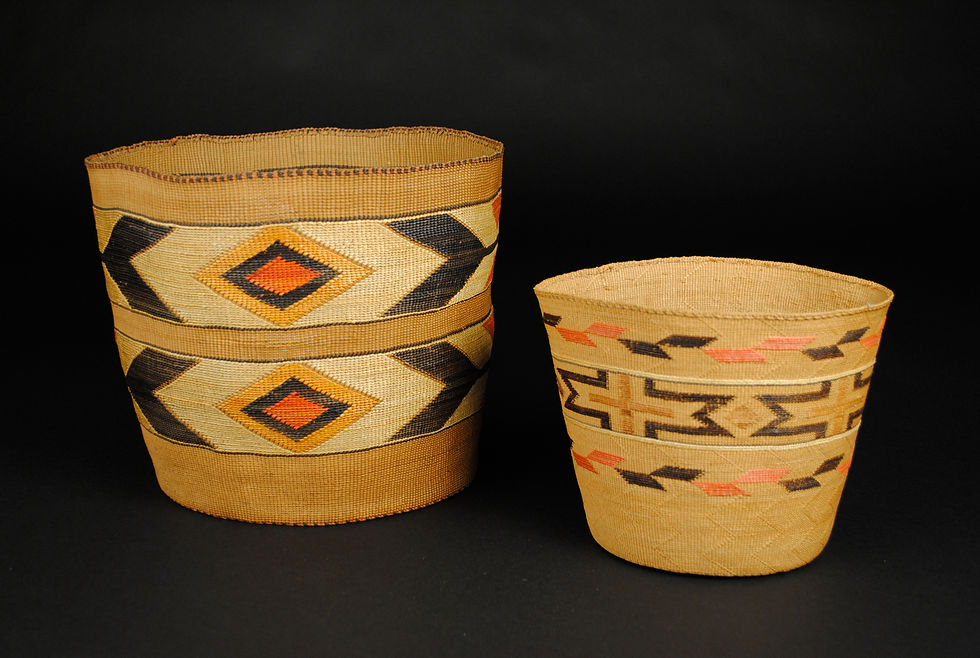
left to right: NAI.259.2010 NAI.234.2010

Basket, ca. 1915 Tlingit. Alaska Territory. Woven Cedar, Spruce. 8.25" x 10.5" x 10"
Very little occurred in the life of Northwest Coast peoples that did not include cedar. Cedar trees, both red and yellow, were the center of the culture’s utilitarian and artistic creations. Both the bark and trees were used extensively: they were the raw material for carved bowls, storage boxes, ceremonial masks, totem poles, woven baskets, clothing, and mats that covered the deceased. Cedar was always present in their lives in both weaving and carving.
Women, with the help of men, collected bark from cedar trees, taking only three strips from the north side of the tree.
The women separated the two layers of bark, leaving the heavy outer bark in the forest. The smooth inner bark was folded and taken back to the village.
The strips were soaked in water to remove the pitch, and then dried completely for storage. To prepare the bark for weaving, it was pounded to break the fibers and separate them, after which the fibers were hand-rolled into strands.
The women then wove the cedar strands, sometimes with mountain goat hair, on a half loom, creating cloaks and other garments.